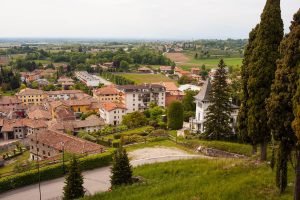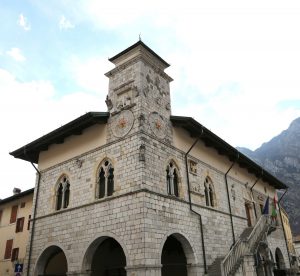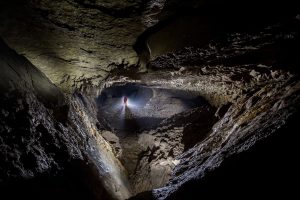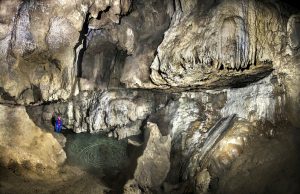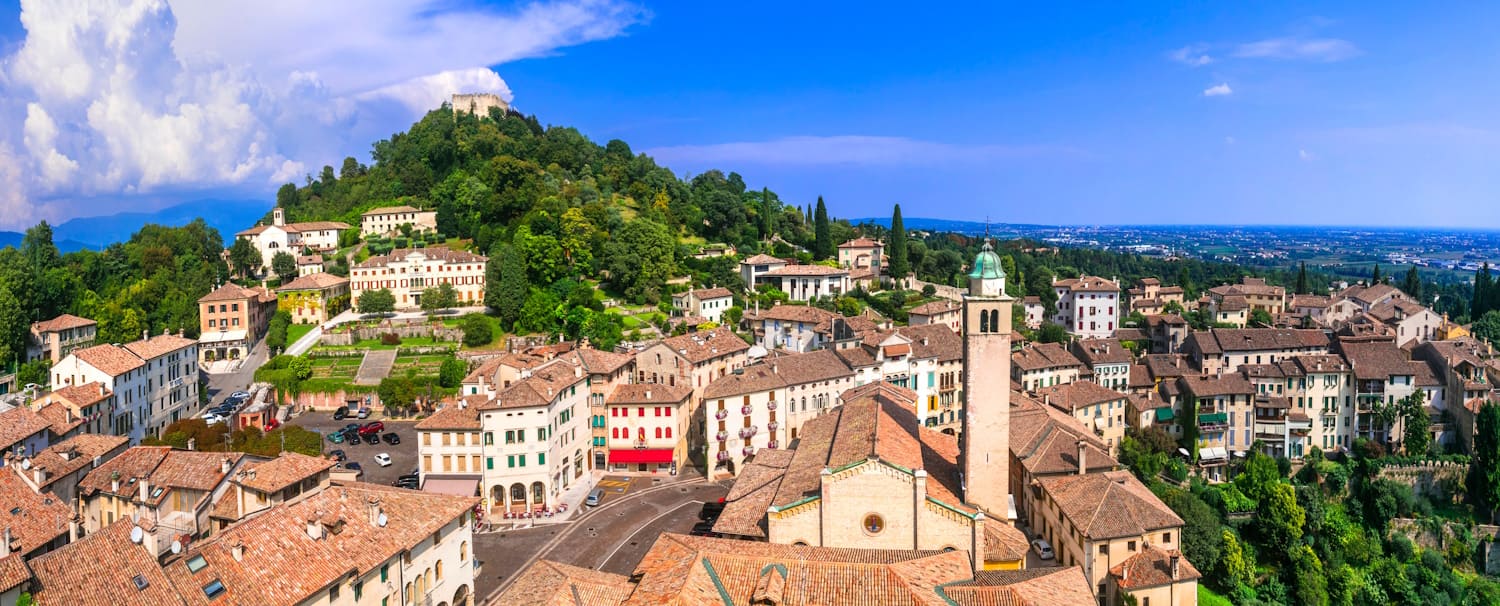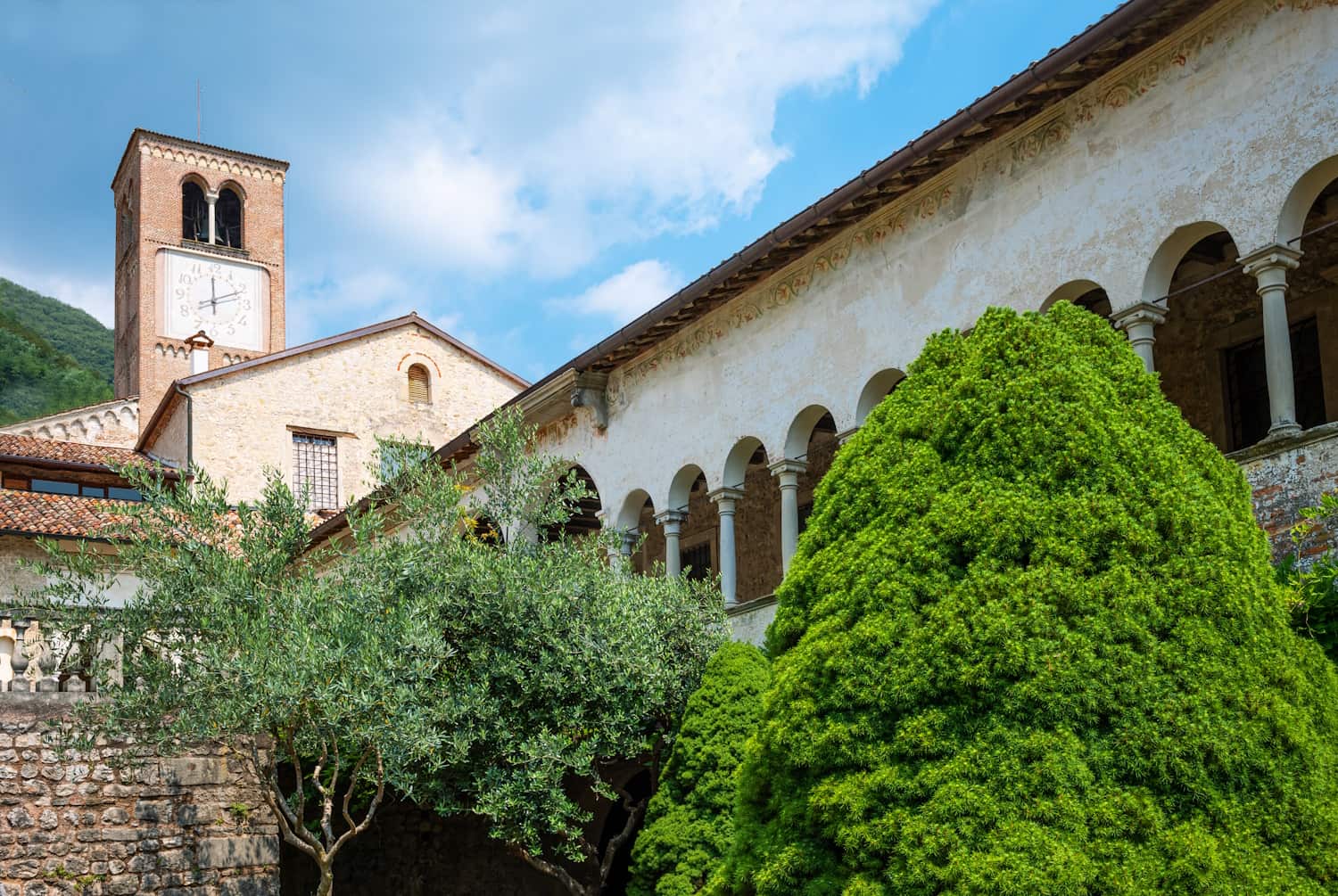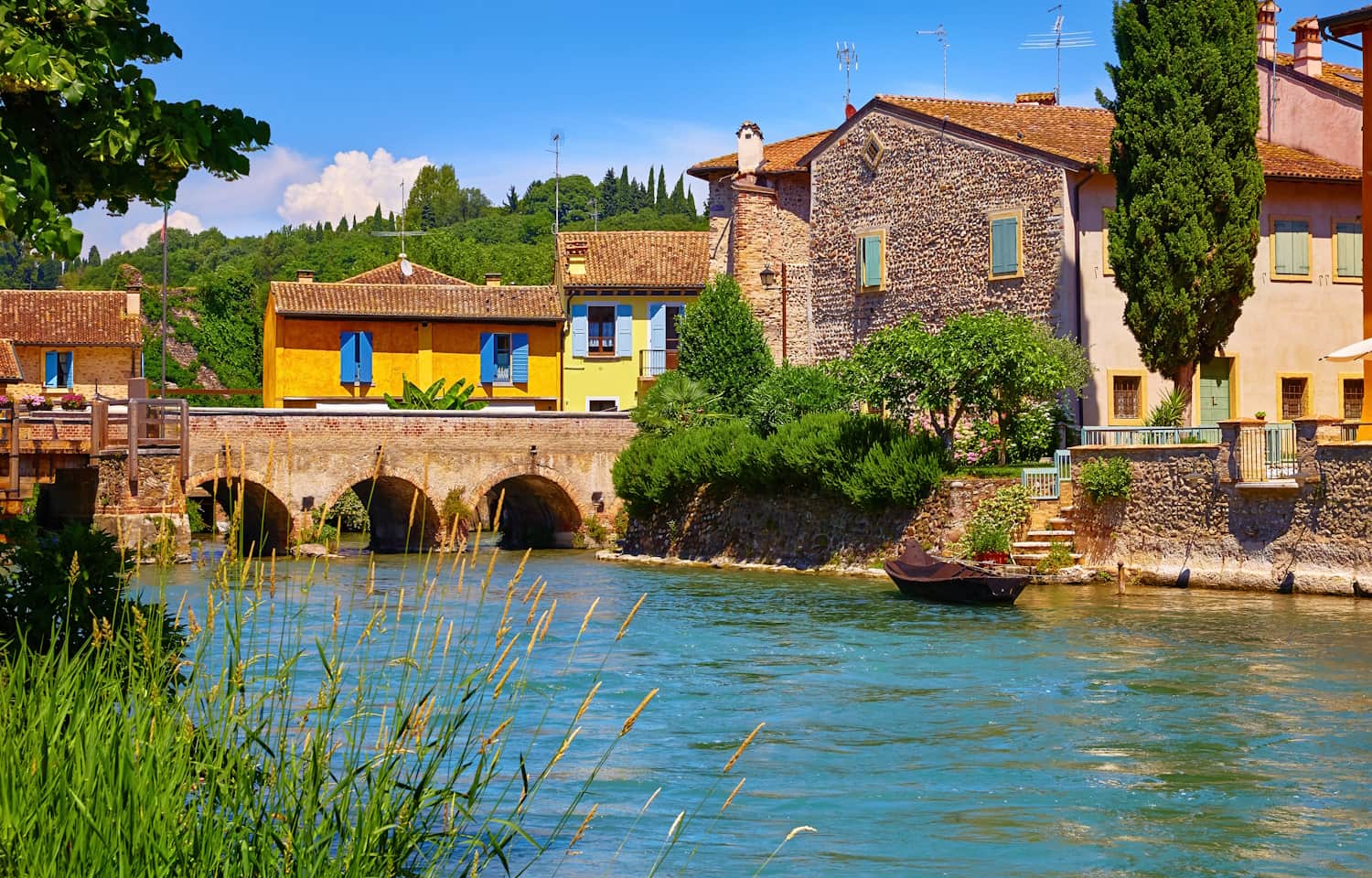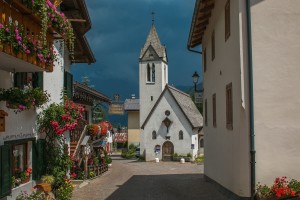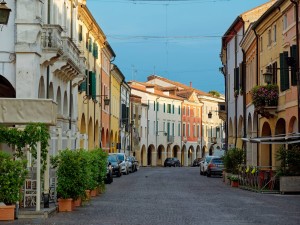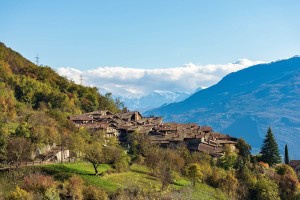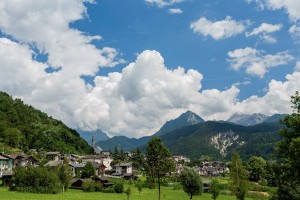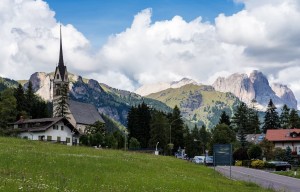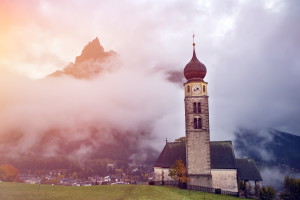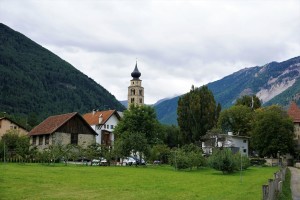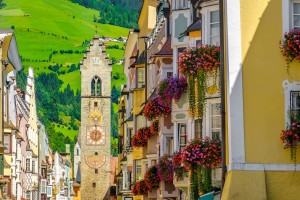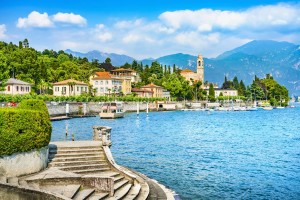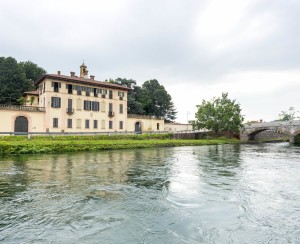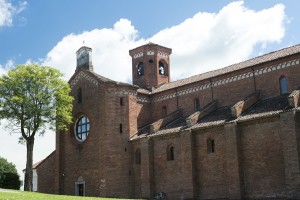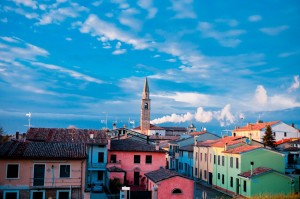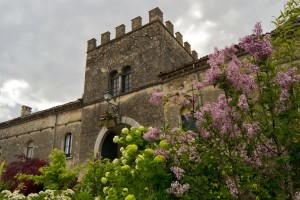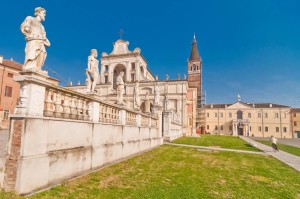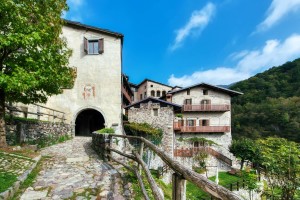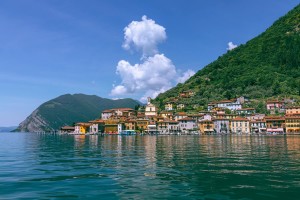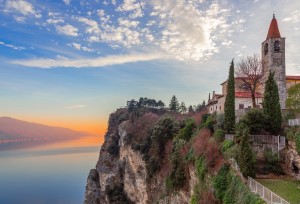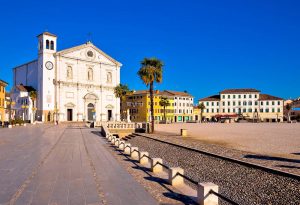
©Bigstock.com/xbrchx
While the north and centre of Friuli-Venezia Giulia are characterised by the mountainous and hilly terrain of the Southern Carnic Alps, the autonomous region in the far northeast of Italy becomes increasingly flat towards the south, criss-crossed by numerous rivers and finally facing the Adriatic Sea and the Gulf of Trieste. In this area with special rights where, for example, the Friulian language and culture are preserved, there are some well-known cities, such as Trieste and Udine, but also many hidden treasures. The private association “I borghi più belli d’Italia” is dedicated to the most beautiful places in the country, of which there are eight in the south of Friuli-Venezia Giulia.
Clauiano
Our first stop takes us to Trivignano Udinese, just 15 kilometres southeast of Udine, where the Natisone and Torre rivers meet. The most beautiful place here, however, is the Frazione Clauiano (approx. 500 inhabitants), its name probably going back to the original landowner. With its stone buildings and gravelled roads, Clauiano conveys an exciting atmosphere of country life in the past. The oldest buildings in the town centre date back to the 15th century; Casa Gardellini with its red and white façade decoration being the oldest house. The Chiesa di San Giorgio may only have been built in its current form in the 18th century, but its roots go back much further. A particularly beautiful baptismal font is hidden inside. Numerous villas and (agricultural) estates, such as Villa Manin, the Palladini house and the Bosco estate, accompany your walk through the place.
Cordovado
Cordovado (approx. 2,500 inhabitant) was once surrounded by a massive medieval wall. Not much might remain of the 11th century fortifications, but you can still feel the spirit of days gone by in every corner of this fascinating place. Many of Cordovado’s most important buildings can be found around the old castle, including the elegant Renaissance palace Palazzo Agricola, the magnificently frescoed Palazzo Bozza Marubini and the monumental, three-storey Palazzo Freschi Piccolomini with its large portal. A little further out, the pilgrimage church of Madonna delle Grazie seems to literally shine – a real jewel of baroque art with a gilded ceiling and stately paintings. Speaking of stately: the mighty Palazzo Cecchini is also worth a visit.
Gradisca d’Isonzo
Four eras have left their architectural mark on Gradisca d’Isonzo (approx. 6,400 inhabitants): the Venetian rule (15th century), Austrian rule (17th century), Habsburg rule (19th century) and the incorporation into the Italian Republic after the First World War. A huge fort, used as a prison in Austrian times, dominates the townscape (the Slovenian word “Gradisca” means “fortified place”). The former site of frontline between Austria and Italy during the terrible Isonzo battles is now best-known as a stunning place with numerous palaces that date back to the heyday of the Eggenberg family (1647 to 1717). Even today, you can still stroll along the Venetian city walls, originally designed by Leonardo da Vinci.
Palmanova
Palmanova in the south of Friuli-Venezia Giulia is an exciting UNESCO World Heritage Site, the town with its approx. 5,400 inhabitants being part of the Venetian works of defence of the 16th and 17th century. Unlike many other beautiful places, Palmanova was created as a so-called planned town and originally built as a fortress to protect the Republic of Venice from the Turks. in 1593 The fortified town held out until it was conquered by Napoleon’s troops around 200 years later. Today, you enter the star-shaped Palmanova with its width-regulated streets through one of three city gates and immediately get a glimpse of Piazza Grande, the heart of the town. Several churches, the city museum and the fascinating military museum should be on your itinerary, as well as a visit to the Palazzo del Provveditore Generale, the Santo Monte de Pietà and the Palazzo del Ragionato.
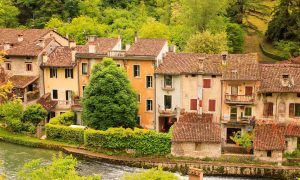
©Bigstock.com/bepsimage
Polcenigo
Situated in the lowlands on the Livenza river, Polcenigo (approx. 3,100 inhabitants) combines natural beauty with a charming village idyll. All kinds of old, narrow alleyways lead through the borgo, which was originally built around the fortress resting on a hill. However, little remains of the old castle complex after a fire, and it was converted into a Venetian villa in the mid-18th century instead. Similar to so many other places throughout the region, all kinds of palaces accompany your tour of Polcenigo, including Palazzo Zaro, Palazzo Fullini and Palazzo Scolari-Salice. Several churches await you in throughout the place as well, including the 13th century Chiesa di San Lorenzo, which was extensively renovated in later years, and the parish church of San Floriano on the hill with its prominent frescoes. A detour to the magnificent Gorgazzo spring is an absolute must!
Sesto al Reghena
One of the oldest monasteries in the region is located in Sesto al Reghena (approx. 6,300 inhabitants). Abbazia Santa Maria di Sesto was founded around 741 as a Benedictine monastery, and the town itself is probably of Roman origin. It is a surprisingly strongly fortified complex, originally surrounded by seven defence towers. Only one, from the 10th or 11th century, remains and flanks the Romanesque monastery chancery and the impressive campanile. An expressive portal and several frescoes adorn the three-nave basilica. Although the Abbazia lost importance after falling to the Republic of Venice in 1440, it remains an impressive place to visit. There are such places in Sesto al Reghena, including the small country church of San Pietro and the Venchieredo Fountain, which has been immortalised in several literary works.
Strassoldo
This tripr takes you close to the sea. Strassoldo (approx. 800 inhabitants) is part of the municipality of Cervignano del Friuli, one of the larger towns in Friuli-Venezia Giulia. Medieval charm with imperial undertones reigns in one of the most beautiful places in Italy. Two castles dominate Strassoldo – the upper and lower castle (Castello di sotto and Castello di sopra), and in the former you can spend the night in the unique Radetzky Suite (Michael Karl Maria Count of Strassoldo-Graffemberg was the Austrian imperial governor of Lombardy under Governor General Radetzky) with 500-year-old parquet flooring. Of course, this comes at a price, but the castles, which were built around the year 1000, are more than impressive enough in their own right. Ancient charm and vast gardens create a captivating symbiosis, combining rustic medieval features with baroque details. The Lombard stone cross in the Chiesa di San Nicolò in town centre bears witness to Strassoldo’s long history.
Valvasone Arzene
Only established on 1 January 2015 through the merger of the previously independent municipalities of Valvasone and Arzene, numerous churches and palaces line your tour of Valvasone Arzene (approx. 2,200 inhabitants), as they do in many other of the most beautiful places in southern Friuli-Venezia Giulia. The imposing cathedral, for example, built in the mid-15th century and financed by donations from the population and the nobility, stands in Piazza Libertà. In addition to the late 19th century neo-Gothic façade and numerous old treasures, the only surviving 16th century Venetian organ in the whole of Italy that is still in working order can be found here. The old 13th century castle is currently being extensively renovated, including a small theatre. The charming Chiesa di Santi Pietro e Paolo and the elegant Palazzo Fortuni neatly round off your visit.
The many attractions of the most beautiful places in the south of Friuli-Venezia Giulia are sure to inspire you too. A multitude of churches and palaces stand in almost magical harmony with the fascinating nature of the region. Old fortifications and even a monumental planned city with World Heritage status are also on your travel itinerary. That’s several good reasons to pay a visit or two to the northeast of Italy!
